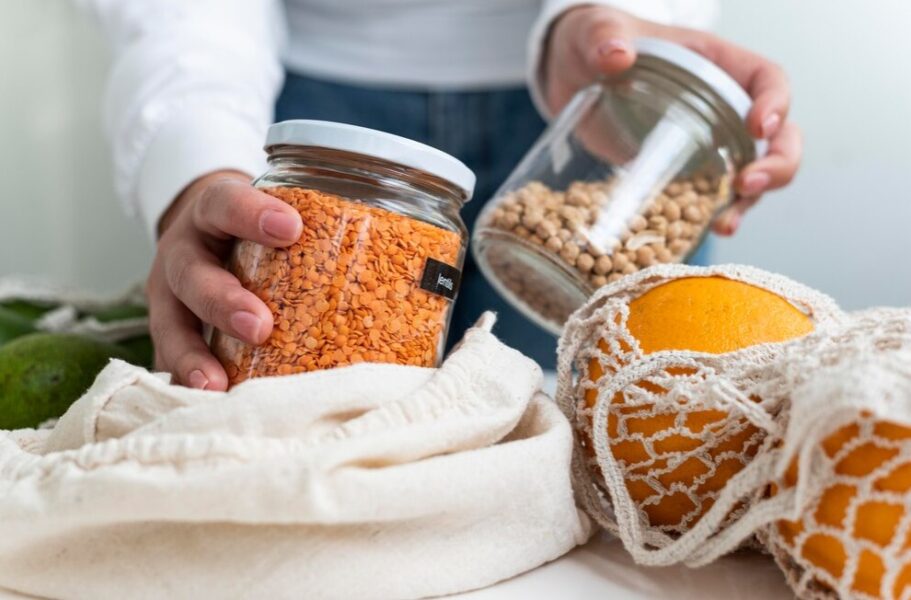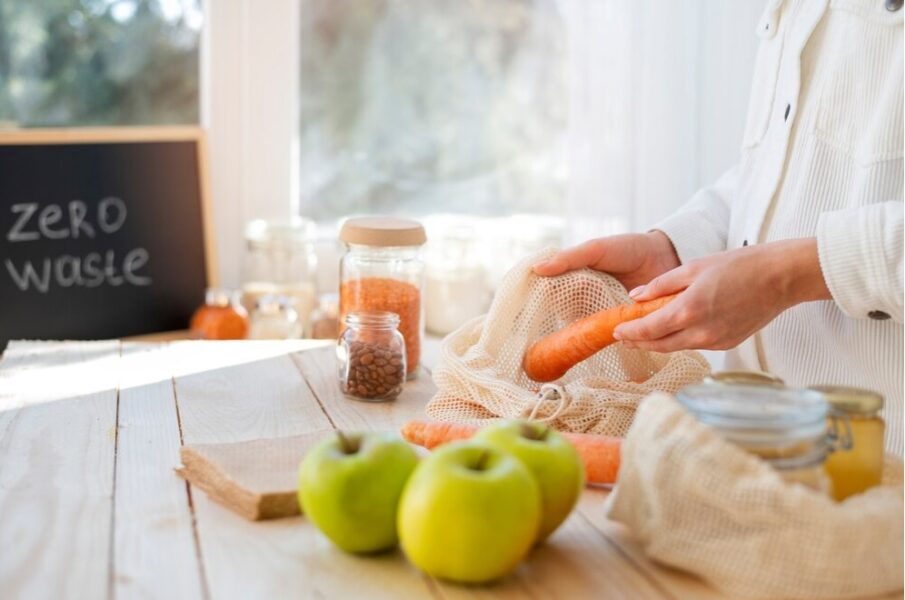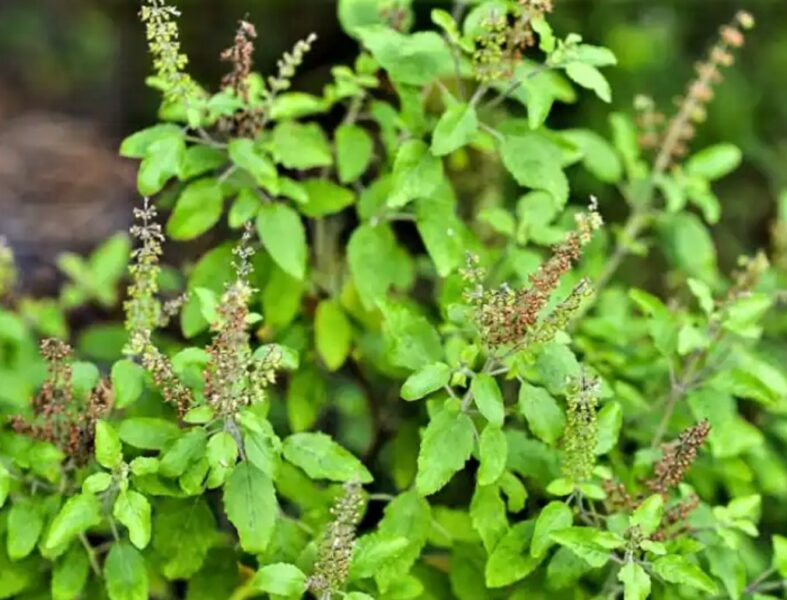
Environmental sustainability has now begun to receive the widespread attention it deserves. Even while it's true that governments and big businesses have the most influence over the world, we can all do our part by making more sustainable decisions in our daily lives. The best place to begin is by learning how to shop for food more responsibly. Some products come in packaging that isn't recyclable or reused. Of course, different foods require different amounts of energy to create.
Here is the ultimate guide to the why and how to know your food if you want to make more environmentally friendly decisions when you go grocery shopping but aren't sure where to start.
WHY
Why Ecological Food?
- Ecological food is grown without chemical pesticides and herbicide.
- It is grown without chemical fertilizer, according to the season and local ecological condition so you eat healthy, fresh and enjoy the real taste.
- Ecological food is non-GMO – so you reduce the risk of eating toxic and unnatural food.
- It is also being responsible – as it food keeps the soil, water, animals, and environment healthy.
Why Seasonal?
- Unseasonal food needs extra protection in terms of chemical pesticides and fertilizer.
- It can also be from cold storage or packaged – so pumped in with a lot of preservatives.
- Seasonal food also boosts your immune system.
- It tastes better, fresh, and affordable and the availability is better.
Why Diverse Food?
- Diversity in food means you are having a balanced diet, getting various micronutrients required for your health – not just a few, in case you are eating the same throughout the year.
- It helps in agri-biodiversity conservation.
- It delights your taste buds, eating the same food is boring.
- Diversity means, you get more options and choice – reduces your dependence on few.
Why Local Food?
- Local food is fresh, has no preservatives, and is suitable for the need of the nutritional need of that locality.
- It travels less distance = less oil burning = less carbon dioxide emission.
- It supports the local economy. You can also get to know who grows food for you (its not grown on the shelf of a shopping mall).
- Local food also gives you freedom of choice and freedom from stale packaged food.
Why Traditional Food?
- Traditional food has a nostalgic ring to it.
- It protects your tradition, for example different festivals have association with different food.
- A food culture has evolved over of thousand years of experimentation and trial to fit into the local nutritional, ecological and livelihood need.
- Traditional food is local, fresh and diverse.
Why Food Grown by Smallholder farmers?
- Small farmers grow ecological food.
- Know the family who feeds you – if possible, buy from a small farmer - it reduces middleman, so reduces the cost.
- Supporting smallholders are also raising your voice against atrocities over natural resources like forest, cropland, grazing land, mountains, river …for commercial purposes.
- It is also being responsible - smallholders conserve biodiversity and nature, they are growing 75% of our food but most of the time do not earn enough.
Why ecological food is costly?
- This is a myth – as the cost of production of ecological food by a small farmer is lower than food grown in a commercial way.
- The labor cost and knowledge cost are higher – so we should pay and amount for that – ideally which should go to the farmer.
- The cost is included if the product is certified.
- As the ecological product does not have a large market, it operates on a small scale so unit cost might be higher.
Why organic certification?
- Certification is not absolutely necessary if you know the producer.
- 3rd-party certification increases the cost of the product. Look for a PGS certificate – which is a participatory farmer-friendly way of organic certification.
- Know your farmer – build a relationship and trust. Food is a relation – do not depend only on papers and numbers for assurance of good food.
- Start growing on your own – so that you need not bother about certification.
You may also like: 10 Indoor Plants That Will Improve the Air Quality of Your Home

HOW
How to buy vegetables and fruits?
- Look for a farmer’s market.
- Buy seasonal. Like tomatoes, spinach, lettuce, beetroot, radish, cauliflower, and cabbage are winter vegetables – do not expect them in summer.
- Buy local and traditional. Forget the imported exotic veggies. Look for vegetables/fruits like banana plant stem, banana flower, young banana, drumstick leaf/fruit/flower, papaya, fig, yam, elephant foot yam, neem leaves, Indian squash (tinda), falsa, etc.
- Look at uncultivated non-commercial crops, especially leafy vegetable
- Go to a small vegetable seller, she might be the grower herself
- Ask the source
- Leafy greens, broccoli, carrots, etc should be crisp and firm, any sign of wilt or discoloring and its past its prime.
- Avoid anything that has sprouted when it shouldn't (such as potato, sweet potato, onion, garlic, ginger etc).
- Choose vegetables and fruits of different colors
- Don’t go by the look always. What looks too green and shiny might be adulterated. Don’t mind a few insect damages – it probably has less pesticide. Bananas with dark spots are not bad – rather it has more sugar content.
- Buy white mushrooms, be sure of the type – better to stick to a known variety.
- Don’t buy canned, if you can.
- Buy vegetables and fruits in their simplest form. Pre-cut, pre-washed, ready-to-eat, and processed foods are convenient, but often not safe and hygienic.
- Start a garden — in the yard or a pot on the deck — for fresh, inexpensive, flavorful additions to meals.
How to buy cereals and pulses?
- Buy ecological.
- Look for a farmer’s market, if possible buy from known sources/farmers.
- Buy local and traditional. Forget exotic and imported. Look for local pulses, bean seeds, and millets. Look for puffed/popped/flattened rice – compared to corn flex, if it is not local.
- Small seeds of moong, lentils etc are better than bigger seeds.
- Ask the source – avoid pulses from Canada/Australia.
- Avoid anything that has sprouted.
- Choose various types of pulses, do not depend only on one
- Don’t go by the look always. White rice is killing – buy hand pounded or less polished which still have the red/brown coating on the grain.
- Buy complex carbohydrates like millet – millets like Ragi, Joar, Bajra, etc. are a real superfood.
- Label reading is a must if you are buying packed and processed cereals. Don’t rely on front-of-package claims, which can be misleading. For example, if the package says the cereal is made with whole grains, the amount might actually be small.
How to buy fish and meat?
- Look for farmer’s markets.
- Buy local and small fish. Also look for muscle and cockles, small shrimps, shells, snails etc.
- Avoid buying dead fish or chicken. It might contain formalin. It should not smell rotten.
- Fresh fish should feel slippery. The gill should be red. Check the eyes. They should be crystal-clear, wet, and shiny, with no sunken features. The tail and dorsal fins of the fish should be healthy-looking, wet, and intact. A fish that's been mishandled will have torn or ragged fins, while an older fish's fins will be dry and brittle.
- Ask the source.
- Choose different kinds of fish, do not eat only one type always.
- The color of fish/meat should not be unnaturally red/yellow.
- Don’t buy canned, frozen fish/meat.
- Buy fish, and meat in their simplest form. Pre-cut, pre-washed, ready-to-eat, and processed foods are convenient, but often not safe and hygienic.
- Buy free-range chickens, avoid poultry chicken – to be precise the white one.
- Buy duck eggs, if you are allowed to eat fat. Country chicken egg is also preferred more than the poultry eggs.
How to read a packet?
- Avoid packaged food, especially junk food like chips, and cold drinks because it contains empty calories
- Turn the packet over to real information. Everything on the front is messages designed to get you to buy the product.
- Look at the nutritional information panel. The ingredients are listed in order of highest to the lowest amount in the food. Be wary if the first ingredient does not match what the product it is supposed to be. For instance, if you are looking at fruit juice, and something other than fruit is shown first, then leave this product behind. Be especially wary when sugar is listed as the first ingredient.
- Look at the ingredients panel. If the ingredients list has more than 5-6 ingredients, it’s usually a sign the product has been heavily processed and is unlikely to offer much in way of good health.
- Look for the shelf life date or expiry date or Use by or Best before date.
- Storage conditions when unopened and after opening packaging.
- The name & address of the manufacturer, packer, and / or seller.
- The country of origin (in case of imported foods) – avoid imported food, and food traveling long distances.
- “Date of manufacture” means the date on which the food becomes the product as described on the label. “Date of packaging” means the date on which the food is placed inside the package or container (tin, bottle etc.) in which it will ultimately be sold.
- Look for the vegetarian logo, FSSAI logo, and PGS logo.
How to detect adulteration?
- For yellow-colored food/turmeric: Add a few drops of muriatic acid (bathroom cleaner) – if that turns pinkish, it contains metanil yellow. It can cause breast tumor and affects kidney, lung, and testes.
- For red-colored food (sauce, jelly, lozenge etc.): Add a few drops of Hydrochloric acid to the solution of the red-colored food – if that turns blue, it contains Congo red. It can create ulcers in the brain, eye, and urinary bladder.
- For green color in vegetables: Rub the vegetable with cotton soaked in paraffin or coconut oil. If the vegetables are colored with malachite green to make them look fresh , the cotton will turn green. It affects the testes, urinary bladder, spleen, kidney, liver, breast, and ovary.
- Adulteration in milk: If milk contains water, the reading in the lactometer will be less than 26. Use a few drops of iodine & the milk will turn blue if arrowroot or starch is mixed.
- Sometimes Urea is puffed in rice to make it pop better and look white. Take the water where the puffed rice is soaked for about 10 minutes. Mix 2 spoons of ground pigeon pea, heat it – let it cool down for 5 minutes. Add a few drops of phenanthroline, if it turns pink – the puffed rice contains urea.
- Iron dust in tea leaves: Use a magnet.
- Colour in tea leaves: The tea leaves will not release color in cold water. So soak tea in cold water, if it becomes black – you can be sure that tea contains color.
- Dry papaya seed in black pepper: Black pepper seeds are perfectly round, whereas Pappaya seeds are not.
- Petroleum in edible oil: Very difficult to understand – if it foams too much during heating, smells fowl or discolours after boiling – it might contain adulteration.





